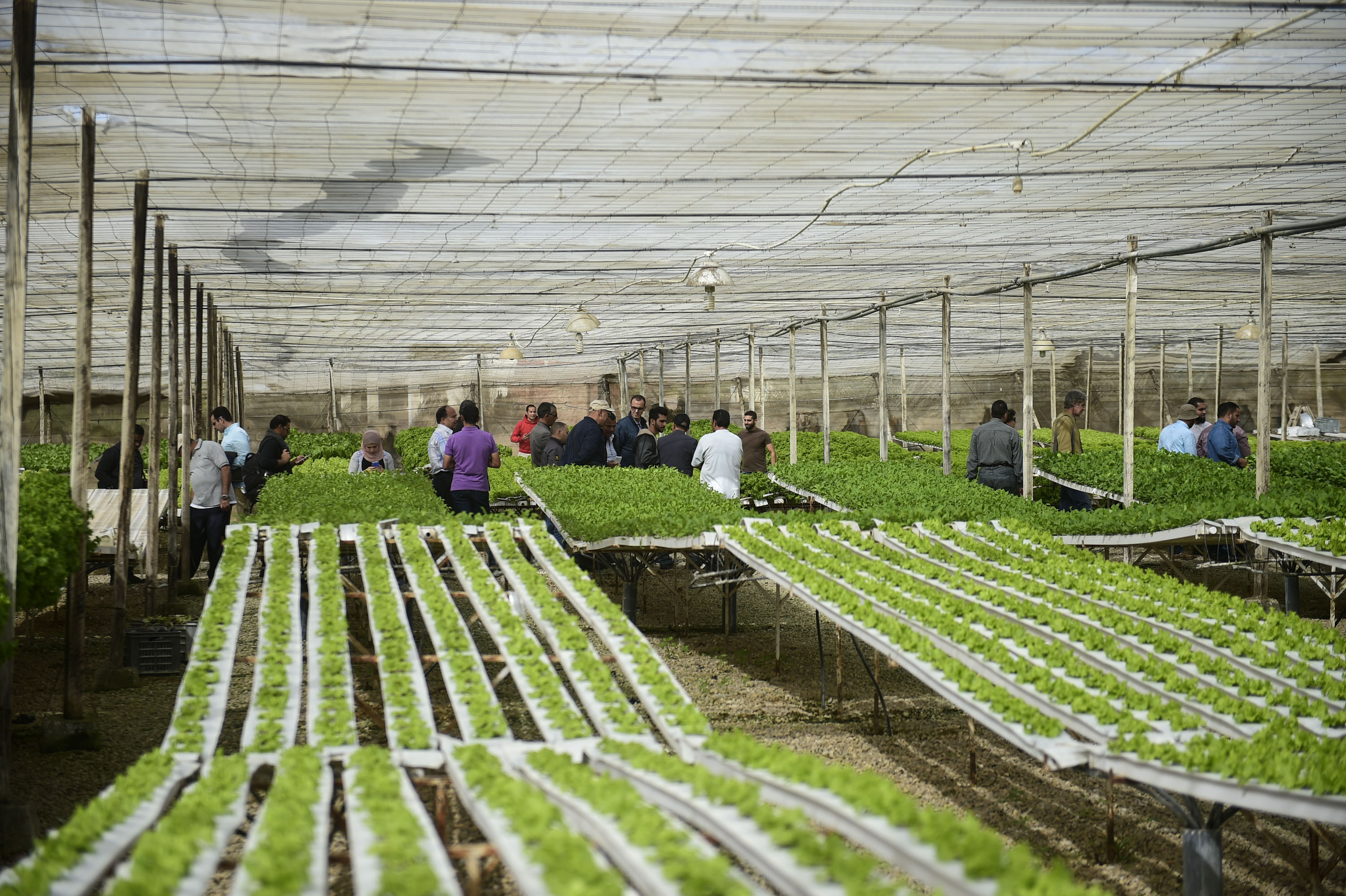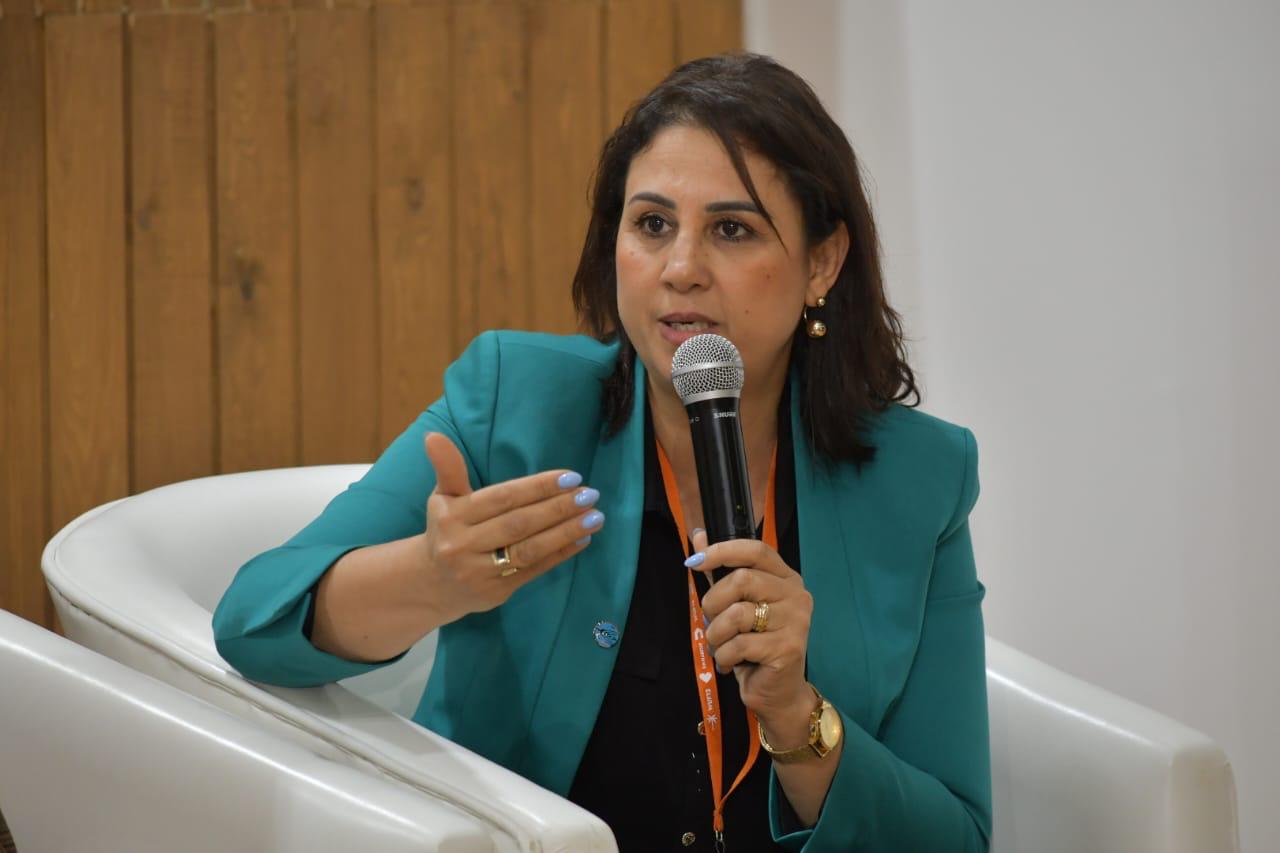Greening agriculture, water scarcity and climate action
Advancing the bioeconomy in the Near East and North Africa: A path to sustainability and innovation

©FAO/Khaled Desouki
As global demand for sustainable solutions intensifies, the bioeconomy is emerging as a transformative model with the potential to drive inclusive development, spur innovation, and protect ecosystems. In the Near East and North Africa (NENA), where natural resource scarcity and environmental challenges are increasingly acute, the bioeconomy offers a pathway toward resilient, climate-smart, and resource-efficient agrifood systems.
The Food and Agriculture Organization of the United Nations (FAO) has adopted the definition of the 2020 Global Bioeconomy Summit Communiqué as its working definition within the context of its Strategic Framework 2022–2031 and the Programme Priority Area (PPA) on bioeconomy for sustainable food and agriculture:
“the bioeconomy is the production, utilization, conservation, and regeneration of biological resources, including related knowledge, science, technology, and innovation, to provide sustainable solutions (information, products, processes and services) within and across all economic sectors and enable a transformation to a sustainable economy” (FAO, 2021a). This broad and inclusive framework reflects the growing recognition that solutions to pressing global challenges such as food insecurity, climate change, environmental degradation, and unemployment must be interconnected and cross-sectoral.
A growing focus at global and regional levels
Recognizing the potential opportunities of integrated, resource-efficient approaches, the 43rd FAO Conference in 2023 emphasized their possible role in transforming agrifood systems and encouraged further integration of bioeconomy-related discussions across FAO’s governing bodies and technical committees. This includes the joint work roadmap between the Committee on Agriculture (COAG) and the Committee on Forestry (COFO), reflecting growing global interest in the linkages between agriculture and forestry through a bioeconomy lens. During the 29th session of COAG and the 27th session of COFO, several FAO Members expressed interest in exploring a multistakeholder global partnership on bioeconomy.
While engagement levels and perspectives vary among NENA countries, there is growing recognition of national initiatives that already align with bioeconomy principles. These developments are particularly relevant as the region prepares to highlight the bioeconomy during the 27th session of the Near East Forestry and Range Commission (NEFRC), scheduled to take place in Saudi Arabia in September 2025.
Regional challenges and opportunities
NENA faces significant agricultural challenges driven by climate change, land degradation, and resource scarcity. The OECD-FAO Agricultural Outlook 2024-2033 highlights that 30-40 percent of agricultural land is degraded, with post-harvest losses reaching similar levels for some crops. Climate change could reduce yields by up to 20 percent by 2050, while food imports account for around 60 percent of wheat consumption.
Energy demand is also rising, with traditional biomass still playing a key role in rural livelihoods in countries such as Mauritania, the Sudan, and Yemen. As population growth intensifies, so does pressure on fragile food and energy systems.
Status and outlook of the bioeconomy in the region
While the term itself is not yet commonly used in national strategies across the NENA region, a regional stocktaking exercise found that many countries are indirectly pursuing bioeconomy-related goals through policies focused on the circular economy, green growth, or bioenergy. These efforts provide a solid foundation for coordinated bioeconomy development.
FAO’s Food and Agriculture Policy Decision Analysis (FAPDA) tool reveals that several NENA countries, especially members of the Gulf Cooperation Council, are advancing policy measures in sustainability, climate resilience, agricultural technology, and resource efficiency. These efforts indicate a growing readiness to formally integrate the bioeconomy into national development agendas.
Across the region, promising practices are emerging. In Morocco, circular economy principles are integrated into the 2019 National Strategy for Sustainable Development, with particular focus on water, energy, agriculture, and waste. This strategy aims to contribute 4 percent to GDP, while waste reduction programmes are expected to cut economic losses by 0.4 percent of GDP.
In Saudi Arabia, while a national circular economy strategy is still in development, Vision 2030 and the National Environment Strategy underscore a gradual move toward sustainability and circularity. Saudi Arabia’s new National Biotechnology Strategy, launched in 2024, aims to position the country as a regional leader. It focuses on four priority areas: vaccines and biomanufacturing, genomics, plant optimization, and localization of production.
The Sudan provides an example of private sector-led bioenergy development. The country has launched clean energy projects that produce electricity from crop residues and wastewater and generate ethanol and biodiesel from sugarcane and soybeans. In Iraq, the availability of approximately 10 million tonnes of biomass from agricultural waste offers untapped potential for energy generation, though integration with energy systems remains limited.
Rural livelihoods also stand to benefit. Ecotourism, non-wood forest products (NWFPs), and rangeland-based activities are increasingly seen as components of bioeconomy strategies. In Morocco, the carob value chain is part of efforts to restore forests and reduce rural poverty. Elsewhere, interest is growing in NWFPs such as gum, honey, and miswak, reflecting the diverse potential of biological resources across the region.
Realizing bioeconomy potential in the NENA region
This integrated approach to building efficient, inclusive, and climate-resilient agrifood systems is particularly relevant for the NENA region. NENA’s limited natural resources, water scarcity, and land degradation highlight the urgency and potential of transitioning to a sustainable bioeconomy. By promoting circularity, sustainable resource use, and innovation, bioeconomy strategies can help countries in the region do more with less. Several opportunities can help accelerate progress.
First, prioritizing the conversion of agricultural residues and municipal waste into value-added products can support climate goals, reduce environmental pressures, create economic opportunities, and contribute to achieving the Sustainable Development Goals (SDGs).
Second, investments in scientific research, technology, and skills development, especially among the private sector, can unlock new value chains and green industries. This is particularly important for rural youth and marginalized communities, where job creation and entrepreneurship are critical.
Third, bioeconomy development should be linked to innovation and entrepreneurship in bio-based sectors, while supporting knowledge exchange across borders. Traditional and indigenous practices, particularly those led by women, have a valuable role to play in scaling sustainability solutions.
Finally, building scientific and institutional capacity will be essential for mainstreaming bioeconomy in policy frameworks, promoting cross-sectoral collaboration, and ensuring that innovations contribute to biodiversity, climate, and livelihood goals.
A path forward for NENA
The bioeconomy presents a promising avenue for the NENA region to strengthen agrifood systems, address environmental degradation, and create green jobs. Its potential is evident, along with the challenges that must be addressed to realize it. Raising awareness is essential, as is engaging the private sector and entrepreneurs to unlock investment opportunities in biomass, drawing on lessons from circular economy practices already underway in the region.
Promoting national dialogues on investment in NWFPs can help open new markets while enhancing the participation of women and the engagement of youth. With increased investment, stronger coordination, and targeted capacity development, the region can harness its rich biological resources and innovative spirit to build a more sustainable and inclusive future.

By: Fidaa Haddad
Senior Programme Officer, FAO Regional Office for Near East and North Africa
